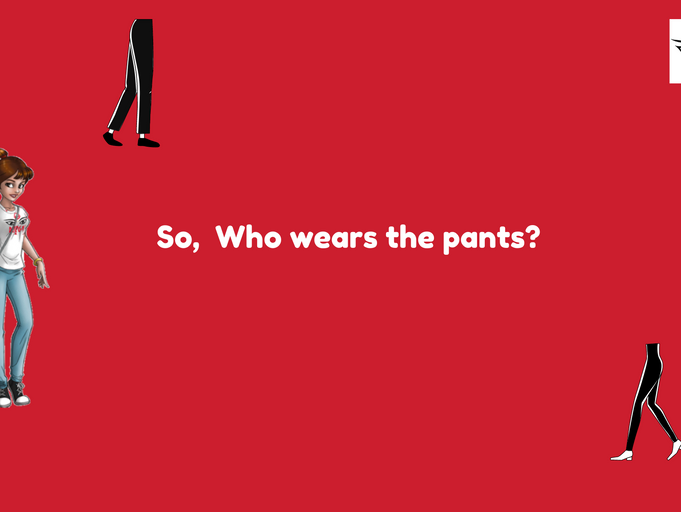So, Who Wears The Pants?

Who says femininity is a woman thing? Before we get into the depths of femininity, let’s look at the definitions of ‘sex’ and ‘gender’. Sex refers to the biological fact i.e the reproductive organ of an individual. While gender refers to traits and social positions that individuals associate with being male or female. The ideas of gender are socially constructed. Gender is a broader, more inclusive word. It’s beyond male and female. There are transgender, non-binary, gender fluid and more colourful spectrums!
But, why am I explaining what gender is when I’m talking about femininity? How are they connected? Well, femininity is a set of attributes, and behaviours, that was traditionally associated with women and girls. Now, some research indicates that some behaviours considered feminine are biologically influenced. It is distinct from the definition of the biological female sex. Any individual can exhibit feminine traits. Traits traditionally stated as feminine include gentleness, empathy, humility, and sensitivity.
Despite having these overbearing assumptions as to what ‘feminine’ is and what is asked of women, there are studies that show that these traits cannot be assigned. Sex and Temperament in Three Primitive Societies by Margaret Mead (1935) clearly breaks these condescending rules of what it means to be feminine. Mead looked at three primitive societies around the Papua New Guinea region. The first, Tchambuli (Chambri), where women were dominant and aggressive while men would spend time decorating themselves and with children. The second place was Arapesh where both men and women were peaceful in temperament and neither men nor women made war. The third, Mundugumor, the opposite was true: both men and women were warlike in temperament.
Feminists all around the world, then and now have fought against these norms. As a girl being told not to scream, not to yell, not to get angry is frustrating but they can’t show that can they? As human beings with feelings, women do experience these emotions but they can’t express them. Women need to exhibit grace and poise but apparently that cannot happen when you feel rage and excitement.
Betty Friedan stated that the key to women’s subjugation results from the high-handed demands of femininity.
These stereotypes are toxic to men as well. While women cannot be aggressive, men are not allowed to be passive. What is to become of this world, when one half of the population is not taught to be empathetic and is even asked to mute their innate compassion? Well, the result is every gender-based problem we face in this world.
The gender-specific behaviours that individuals imbibe are the outcome of socialization. We are brought up to be ‘feminine’ and ‘masculine’, most times without even knowing. It starts with simple things like the sort of toys parents make their kids play with. Barbies and princesses are for the little girls while monster trucks and Beyblades are for the mighty young boys. Pink rooms with dainty decor for the daughters and blue walls with action figures for the sons. What are we telling the children when we do this? “Boys don’t cry, beta” and “Girls don’t kick” are often taught. “Who wears the pants in your relationship?” Well, men and women wear pants so that question is quite nonsensical. What one implies when they say this is, the woman in the binary relationship, is a little more ‘dominating’ than the man. Have you ever asked your friend why she cut her hair like a boy? What does that even mean ‘like a boy’? A woman can very well cut her hair real short because it’s one, easy to maintain, second, it’s always hot thanks to global warming and three because she WANTS to and she likes to. These gender roles and assumptions are so well ingrained in our DNA that it seems sort of impossible to forget them. But it is imperative to make a conscious effort not to make remarks like this.
Gender roles and manners are fluid. I can wear a skirt and kick ass. They go hand in hand. Simone de Beauvoir wrote, “no biological, psychological or economic fate determines the figure that the human female presents in society” and “one is not born, but rather becomes a woman” (de Beauvoir 1949).
